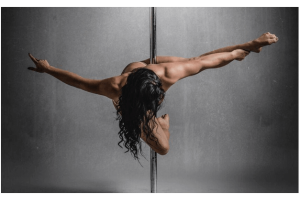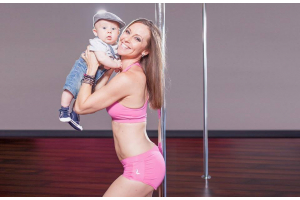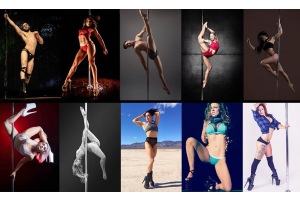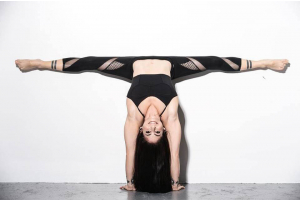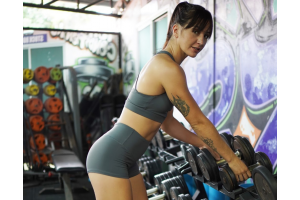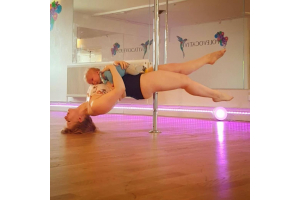So you bought a Yoga Wheel...now what?

We’ve all seen the fancy pictures start cropping up on Instagram of Yogi’s in various balanced and bendy positions on top of a Wheel. You might have been one of us that couldn’t help but order a wheel for ourselves to test out some of these fancy pictures (some of which are much harder than they look!)
But are they a bit of a gimmick? Or can they be useful in our training? After asking fellow pole dancers about their Wheels, a common trend seems to be that people arent too sure what to do with them, outside of the usual yoga poses.
So whether you have a Yoga Wheel already or if you’re looking for something different for your training, hopefully this blog will help.
What is a Yoga Wheel?
A circular piece of equipment usually made from plastic or wood and sometimes coated with a grippy matt layer. They come in a variety of sizes for different uses, flexibility levels and heights. Affordable and versatile so you can easily workout at home, the gym or the pole studio.
Sizes:
15inch: Recommended for very flexible people or 6ft and taller
12/13inch: For people 5’4-5’10 tall. This size is the most versatile for strength and flexibility training and the most common.
10inch: For people around 5’3 or smaller and for those who have limited flexibility.
6inch: Micro wheel. Great for working on balance and flexibility, and is very portable.
Why use it?
– Flexibility: Helps to deepen stretches and support backbend. Movements to suit a beginner right up to advanced.
– Strength /Balance: Can be used to create instability in different positions
– Stability: Can be used to assist in positions such as headstands/forearm stands
How to use it?
Here’s a free workout circuit that will challenge your balance and core strength. Initially, I used my wheel for trying yoga poses and stretches but quickly found that the conditioning benefits could be huge and I really enjoyed mixing up my training with a new piece of equipment.
For the stretching options, there are a huge number of variations you can go into – and if looking to take on any of the more challenging back-bends for example, I would always recommend getting hands-on with an experienced instructor who can take you through the positions safely. Everyone is different and when dealing with deep stretches and new equipment can take a while to get used to. I will follow up this workout + blog with some more wheel exercises that I think will benefit Pole Dancers soon, so keep an eye out!
You can now Subscribe to the Off The Pole YouTube Channel
And as always – join our Off The Pole Community on Facebook to be the first to see free workout videos, live feeds and get support in this friendly group!

